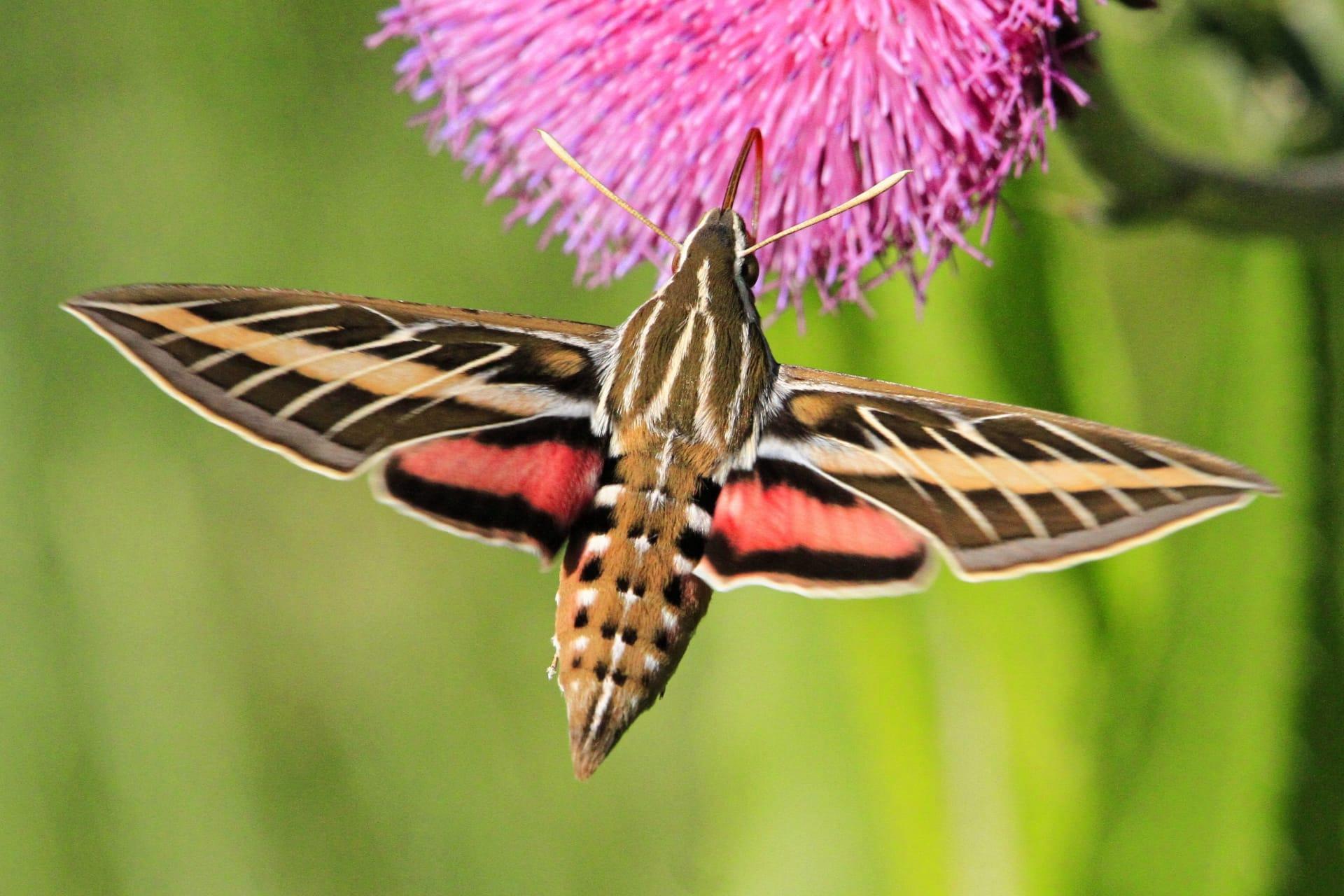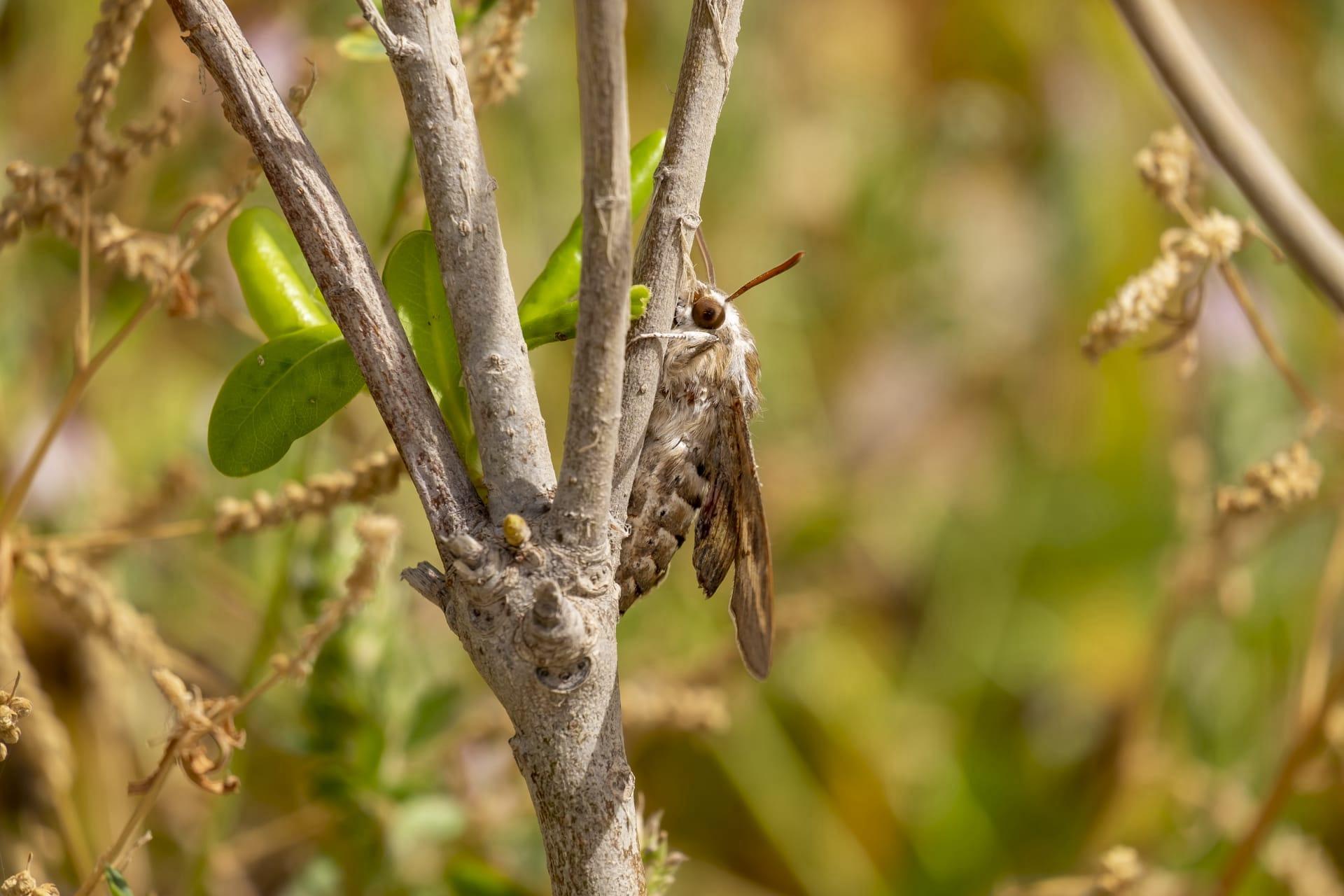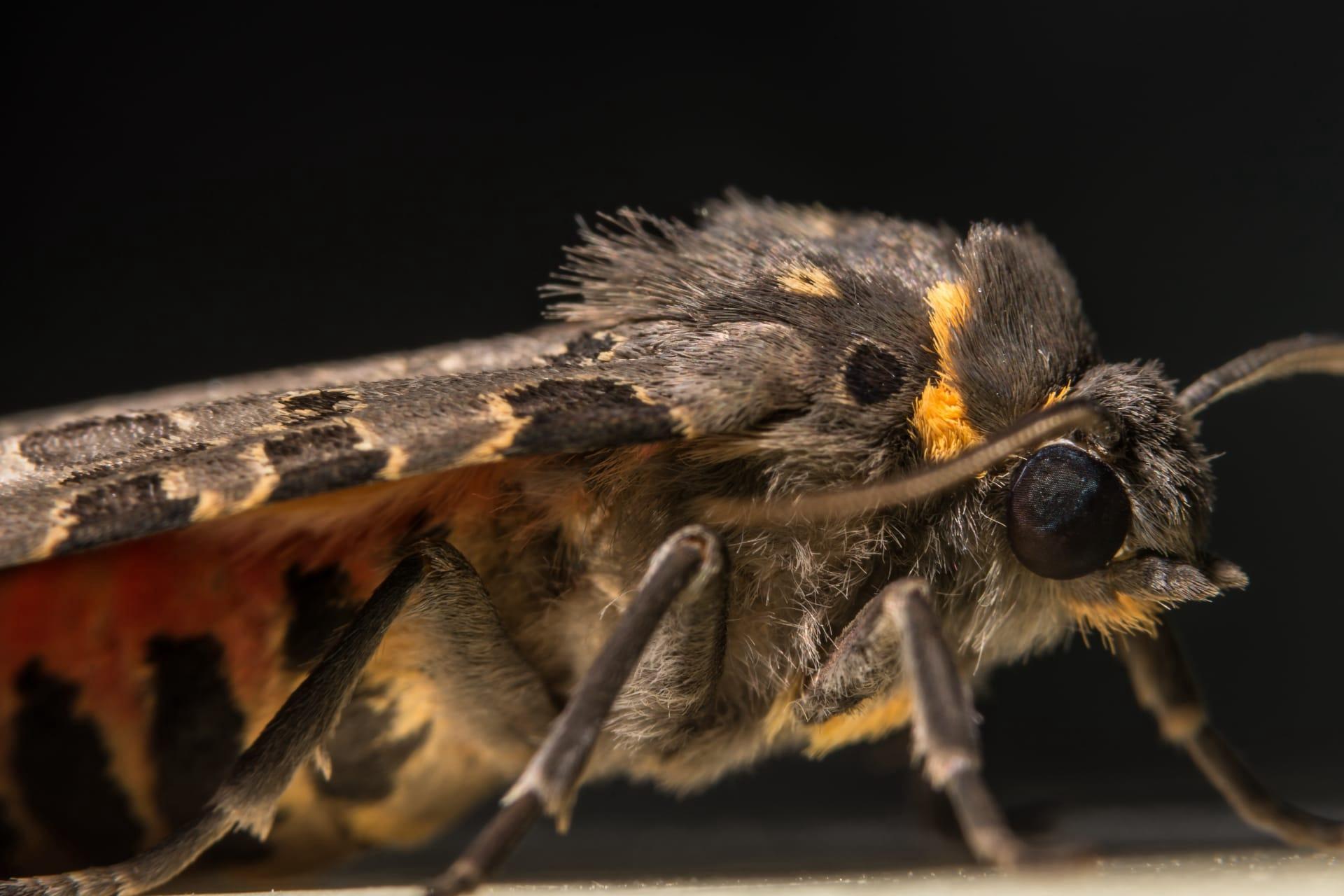Sphinx Moth Trivia
- Home /
- Trivia Question /
- Animal /
- Sphinx Moth Trivia
1
Question: How large can a Sphinx Moth grow, and are there significant size variations among species?
Answer: Sphinx Moths, known for their impressive size, can vary greatly among species. The average wingspan ranges from 2 to 8 inches (5 to 20 cm). The largest species, such as the Hercules moth, can boast a wingspan up to 11 inches (28 cm), making it one of the largest moths in the world.
Question: What unique flying abilities do Sphinx Moths possess?
Answer: Sphinx Moths are renowned for their advanced flying capabilities. They can hover mid-air, fly backwards, and dart quickly from side to side. These agile movements are facilitated by their rapid wingbeat, which can reach up to 85 beats per second, and a robust body enabling powerful flight.

2
Question: Is it true that Sphinx Moths are harmful to gardens and crops?
Answer: This is a common misconception. While some Sphinx Moth caterpillars, like the Tomato Hornworm, can be garden pests, adult moths are not harmful. In fact, they play a vital role in pollination, particularly at dusk, thanks to their long proboscises suited for deep flowers.
Question: Do Sphinx Moths have a short lifespan?
Answer: Contrary to popular belief, Sphinx Moths have a relatively long lifespan for insects. Their total lifecycle from egg to adult can span 2 to 3 months. As adults, they can live up to a month, which is considerably longer than many other moth and butterfly species.

3
Question: What do Sphinx Moth caterpillars feed on?
Answer: Sphinx Moth caterpillars are known for their voracious appetites and feed on a variety of plant leaves. Common food sources include tomato, tobacco, and grape plants. The caterpillar's diet directly impacts its growth rate and size, leading up to its transformation into a moth.
Question: Can Sphinx Moths be found worldwide?
Answer: Sphinx Moths are indeed a global species, found in diverse habitats across North America, Central America, Europe, Asia, and Africa. Their adaptability to different climates and environments contributes to their wide distribution.

4
Question: What distinguishes the appearance of Sphinx Moths from other moths?
Answer: Sphinx Moths stand out due to their distinct streamlined bodies, large, powerful wings, and unique resting posture, where they hold their wings away from their bodies. Their coloring can range from dull browns and greens to vibrant pinks and purples, often with intricate patterns that aid in camouflage.
Question: Are Sphinx Moths active during the day or night?
Answer: Most Sphinx Moth species are crepuscular or nocturnal, meaning they are most active during twilight or night. This nocturnal activity, combined with their hovering flight and long proboscis, makes them excellent pollinators for night-blooming flowers.

5
Question: How do Sphinx Moths contribute to their ecosystem?
Answer: Sphinx Moths play a crucial role in their ecosystems as pollinators. Their preference for deep, tubular flowers makes them essential for the pollination of certain plant species. Additionally, as part of the food chain, they serve as prey for various birds and bats.
Question: What is the mating process like for Sphinx Moths?
Answer: The mating process for Sphinx Moths begins with the female releasing pheromones to attract males. After mating, females lay eggs on the underside of leaves, which hatch into caterpillars. The caterpillars eventually pupate, emerging as adult moths to continue the cycle.